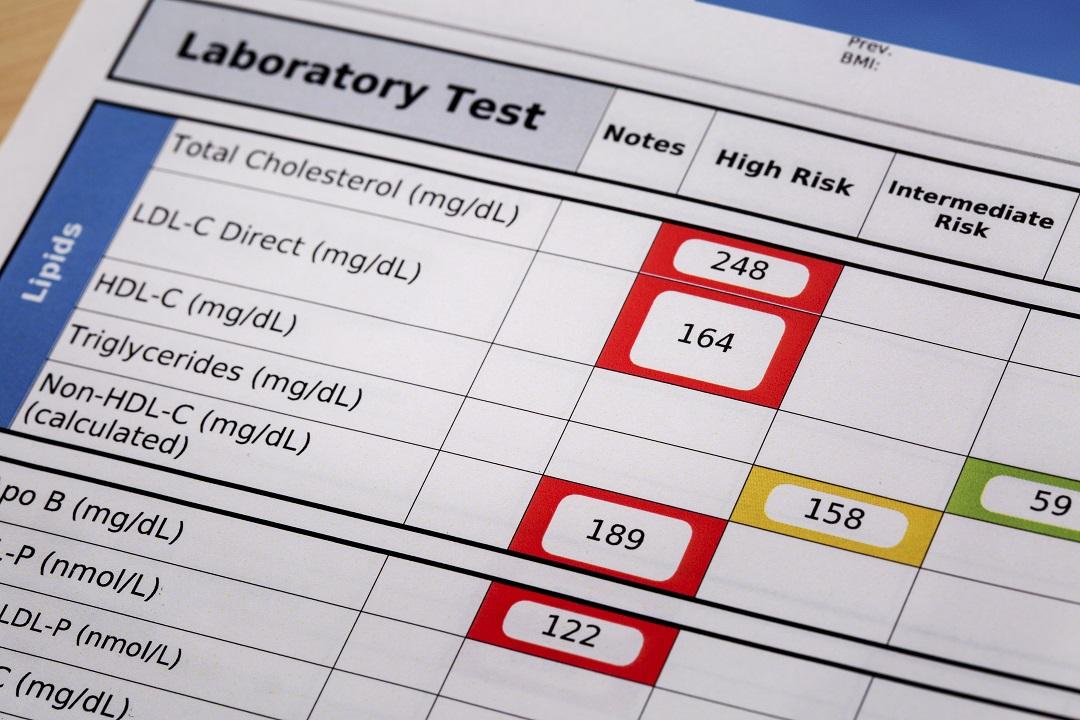Many people do not know their cholesterol is too high because there are usually no symptoms. Keeping your cholesterol levels healthy is a great way to keep your heart, your brain and your legs healthy, preventing heart attacks, stroke and amputation.

But first, you have to know your cholesterol numbers. The American Heart Association recommends all adults age 20 or older have their cholesterol, and other traditional risk factors, checked every four to six years.
Your test report will show your cholesterol levels in milligrams per deciliter of blood (mg/dL). Your total cholesterol and HDL (good) cholesterol are among numerous factors your doctor can use to predict your lifetime or 10-year risk for a heart attack or stroke (estimate your cardiovascular risk...)
Total cholesterol
Your total cholesterol score is calculated using the following equation: HDL + LDL + 20 percent of your triglyceride level. Total cholesterol can be misleading because a person can have a healthy total cholesterol reading and still have low HDL or high LDL. Therefore, most cholesterol treatment decisions are based on HDL and LDL cholesterol numbers, not on the total cholesterol.
Total cholesterol numbers over 240 mg/dL are considered high, numbers between 200 and 239 mg/dL are borderline high, and numbers under 200 are desirable. If your number is over 240 mg/dL, your risk for heart disease and stroke is higher.
| Total Cholesterol Level | |
| Less than 200 mg/dL | Desirable |
| 200-239 mg/dL | Borderline high |
| 240 mg/dL and above | High |
HDL (good) cholesterol
With HDL cholesterol, higher levels are better. Low HDL cholesterol <40 mg/dL puts you at higher risk for heart and vascular disease. People with high blood triglycerides usually also have lower HDL cholesterol. Genetic factors, type 2 diabetes, smoking, being overweight and being sedentary can all result in lower HDL cholesterol. The higher your HDL, the better your heart health. Numbers over 60 mg/dL are considered protective against heart disease.
| HDL Cholesterol Level | |
| Less than 40 mg/dL | A major risk factor for heart disease |
| 40-59 mg/dL | The higher, the better |
| 60 mg/dL and above | Considered protective against heart disease |
The average number for men is about 45 mg/dL; for women, it is about 55 mg/dL.
LDL (bad) cholesterol
A low LDL cholesterol level is considered good for your cardiovascular health. The more LDL cholesterol you have in your blood, the greater your risk of heart or vascular disease.
| LDL Cholesterol Level | |
| Less than 100 mg/dL | Optimal |
| 100-129 mg/dL | Near optimal/above optimal |
| 130-159 mg/dL | Borderline high |
| 160-189 mg/dL | High |
| 190 mg/dL and above | Very high |
In the past, a doctor would calculate your goal LDL level based on your risk factors. Now, we no longer focus on LDL goals, and your risk factors help determine if you should be on cholesterol medication and what dosage should be used.
